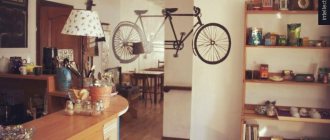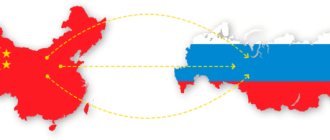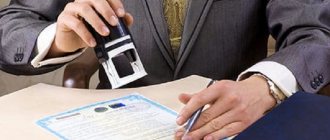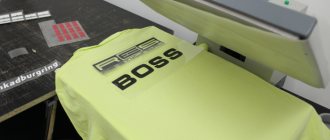Hello, dear readers of dohodinet.ru. There are not many suitable home business ideas. Many entrepreneurial proposals are not suitable for beginners, as they require large investments or special knowledge. A 3D printer business is a promising option for making money at home. It does not require large areas, serious start-up capital or long training. Products created using a 3D printer are in demand and liquid.
General information on 3D printers
A 3D printer is a peripheral device that allows you to print three-dimensional models from various materials.
Unlike conventional printers, 3D printers create three-dimensional images using computer models. They print the object layer by layer. 3D printer is used:
- To quickly create prototypes of finished models. For engineering, this is a way to save time and make changes to an object at the stage of its development.
- For the production of finished parts from materials that are supported by 3D printers.
- For the manufacture of casting molds.
- For small-scale home production of almost any item.
- To create prostheses and implants.
- To create weapon components.
- And even for the construction of buildings.
In China, the government conducted an experiment to create houses with a 3D printer. The business has been quite successful, but the durability and strength of houses made with this device remains to be tested.
The main material for a 3D printer is plastic. For small-scale production, this is the best option, as it allows you to get a high-quality item for cheap money. A kilogram of ordinary plastic powder for a 3D printer costs about 500 rubles.
For more important production, expensive materials are used. These are simulators of wood, stone and industrial mixtures. They cost several times more, but are not interesting for home businesses due to the high cost of the product.
In order to print something on a 3D printer, you need a three-dimensional model of the object. It is created in special programs - CAD editors. At first, working on creating models yourself is completely optional. There are a lot of different product options online, from cases to miniature figures from computer games.
After you have developed a model, the program decomposes it into layers. Then, layer by layer, the 3D printer reproduces the object. The main advantage of this type of printing is accuracy. It allows you to reproduce an object in the smallest detail.
How to avoid mistakes when 3D printing?
Once the product is ready, there is no need to immediately remove it from the device. Most devices heat up the printing material, so the finished layout needs to cool down. If any error occurs during the process, you can use a print restart - this usually helps. If this does not help, you will need to enter the model into the program again or change the settings.
Knowing the basic rules of how to use a 3D printer, its operation will not be difficult even for a beginner.
How you can make money with a 3D printer: 6 ideas for making money
A 3D printer is great for small-scale production. This is an ideal option for a home business. For a small investment you will get a tool for creating a variety of items. There are several product categories that sell well.
Small toys and souvenirs
Plastic toys, interior decorations or small gift souvenirs can be easily printed on a 3D printer.
Figures
The business of creating figures from game and book universes has always been profitable. I myself have seen more than once how models of characters from the Warhammer 40,000 universe were sold at prices starting from 2,000 rubles. The same goes for computer games.
Real human models have been in demand lately. This is the kind of portrait that every person would like to receive as a gift.
With a 3D model, you can create a mockup of what the characters look like and reproduce them. Not a single person who makes such figures by hand can compare with you in speed. Such models can be sold much cheaper, about 500 - 1,000 rubles. The only difficulty is that you have to paint it by hand.
Architectural models
Using the drawings, you can easily make a model of a house, cottage, even a car, with almost minimal effort. If you choose this option, you can go two ways: sell house models to ordinary people as decoration, or collaborate with engineers and construction firms to provide them with ready-made building models.
Even as souvenirs, models of buildings and cars sell well. For a small building you can get up to 2 - 3 thousand rubles. It will look good in the interior.
Molds for soap making
Soap makers are developing, they constantly need new forms, but making them by hand is almost impossible. You can sell soap making molds for your home business. They are not that expensive, up to 100 rubles, but if you work with several companies, you can periodically receive good orders.
The profitability of such production is quite low. Despite the fact that the cost of one form is cheap, it will also be sold inexpensively. The only option when it will be possible to engage in such a business is if there are a large number of shops and soap makers in the city.
Spare parts
A 3D printer can print almost any small parts (up to 35 centimeters). Even spare parts for cars can be made from expensive materials, for example, a door handle, side mirror, etc. And not only for cars. You can put the production of spare parts on stream.
But rather, this is truly custom work. You can print parts for customers' products. But there is a great difficulty - developing drawings for such parts. It can take a lot of time, and your expenses over a long distance are unlikely to pay off, but as an option, custom work may be suitable.
Food industry
You can even create edible things with a 3D printer. Hydrocolloids or hydrogel are used to print food products. With their help, scientists can easily reproduce sugar, cream, chocolate, bananas, bread, etc. Developments do not stop and in the future it is likely that it will be possible to print even meat on 3D printers.
A simple printer can easily print sugar figures, cakes, candies, and pasta. People love tasty food that looks good, and you can make good money from it. The main problem is printing materials. They are quite expensive.
The most interesting product, in my opinion, are personalized figurines. They are expensive because they are custom designed, but they look attractive. In the West, such figures are very popular, and echoes of this trend are gradually reaching us, in Russia. This is still an untapped, but very promising niche that would be worth occupying.
Ideas for making money
So, we have decided that for work we need a computer, a printer and consumables. You don’t need a special room for the first time; an ordinary apartment will do. In the future, when the business is up and running, you should think about a separate office for meeting with clients, registering as an individual entrepreneur, expanding sales channels, etc.
The main initial task is to buy a printer and learn how to use it, because it is not so easy. There are many modes to be tested before high-quality objects begin to appear that will not fall apart, leak, or skew to one side.
Let's talk about what items you can make money by making on a 3D printer.
- Keychains, souvenirs, figurines, miniature copies of people. Fans are ready to do any tricks to get a figurine of their favorite character from a movie or computer game. The hero models made using conventional technology do not please with variety. And on a 3D printer you can make any copy, be it Sherlock Holmes or The Witcher. For things dear to the heart, prices range from 500 to 4,000 rubles. However, there is painstaking post-processing: the plastic figures are painted by hand.
- Products. Edible products are also created in the 3D printer chamber. Hydrocolloids are used instead of plastic. Based on them, even in an inexpensive printer you can create fancy pasta, lollipops or sugar patterned figures. By the way, regular chocolate can also be layered using FDM technology, forming a finished delicious product.
- Themed accessories. Cosplay lovers are one of the possible clients. It is difficult to find jewelry, armor or weapons for a character on sale, so 3D printing comes to the rescue.
- Prototypes, layouts. Before launching full-scale production, you need to ensure the viability and completeness of the product. Thanks to a digital model, you can recreate any prototype, for example, a car or a building. And you can sell the model for decent money, since such orders are usually placed by reputable construction or architectural firms.
- Cases for smartphones. The times when everyone everywhere ordered cases with their first or last name are over. But the desire to stand out with the help of a gadget remains unchanged. You can really earn 700 – 3,500 rubles on covers made from a 3D printer. for one model.
- Hollow plastic models. Oddly enough, they are in demand because you can put a light bulb or LED in them and get an unusual lamp.
- Dishes, interior items. There is huge scope for imagination here. Whether it will be a plastic bear head or a figured mug is up to you.
- Figures for board games. An ordinary chess knight or pawn is unremarkable. But a set of figures where the rook has the head of his best friend, and the king has the head of Brad Pitt looks much more tempting.
- Exoskeletons. They are designed to fix the damaged limb and restore muscle mobility. For decades, this function was regularly performed by plaster, which caused a lot of inconvenience. Thanks to printed exoskeletons, it has become possible to take a shower and simply scratch the finger on your broken arm.
How much to invest to make money on 3D printing
First we need a 3D printer. You can go three ways:
- Order in China. The quality of such printers is quite unstable. Either a good model or a defective one may arrive. The cost of a normal model from a trusted company is from 40,000 rubles.
- Buy a Russian 3D printer. The quality is better, there are practically no risks, but the minimum price is 25,000 rubles; for a good model you will have to pay from 50,000 rubles.
- Do it yourself. This is quite difficult, but if you bother, you can assemble an excellent model for 25,000 rubles.
At first, advertising will cost a lot of money. A novice businessman who is unfamiliar with ways to attract customers will find it very difficult to establish a flow of sales of his own products. This is why you need to invest money in advertising or look into promotion.
The best start for a beginner is social networks. Creating a VKontakte group in which you will sell materials will be the best option. You will have to spend money on a good targetologist who will attract clients. All this will cost approximately 20 - 50 thousand rubles.
Since we are talking about a home business, we will not need premises. Therefore there is no rental cost. The materials required to create products using a 3D printer usually cost about 20% of the final cost of the product. Therefore, the costs for them will be in the region of 10 - 15 thousand rubles.
Total. Printer at least 40,000 rubles + 30,000 rubles advertising + 15,000 rubles materials = 85,000 rubles initial costs.
Scope of application of 3D printers
The areas of use of unique printing are varied:
- Architecture;
- Foundry;
- Design;
- Scientific research;
- Mechanical engineering;
- Education;
- Consumer goods market;
- Jewelry sector;
- Dentistry;
- Business;
- Medicine;
- Electronics production.
3D technologies have firmly established themselves in the mass market of plastic products, children's toys and research institutes. Therefore, clients of developed businesses have new opportunities in all areas of human activity. A three-dimensional model of a project or future product is printed on a special printer as a full-fledged material object.
Workers set certain parameters and dimensions of the future product, and then the product is printed from any material. However, most often they use lightweight plastic for the convenience of the client. And the weight of a toy or new equipment is reduced due to the lightness of the processing elements.
Simulation of complex devices and projects allows customers to accurately evaluate the effectiveness of the multifaceted capabilities of new printing technology. And lower prices make 3D printers more affordable for mass consumption. After all, it is really difficult to compete in a diverse market. Especially with high competition and multifunctionality of technology.
Active use of printers is observed in mechanical engineering and prototyping. All customers are aware of the upcoming projects of new gadgets and electrical appliances. However, before the product is released, many inspections, tests and promotional presentations of the product are required. And for this we need miniature models of products in record time. 3D printing in this case can replace casting and machining, or rather several months of hard work for people.
Accelerating production processes helps develop the economy and industrial production of medical, scientific and engineering goods. The savings in terms of resources and precious time amaze customers and contribute to increased innovation in the market. Design developments have become truly in demand thanks to the development of research and medicine. The variety of applications of this seal is off scale compared to conventional electronic devices. Design is used even in dentistry and medicine, and most of all in architecture and design.
Art
The creation of works of art begins with sketches or drawings, models or drawings. And in serious work it is necessary to use new technologies. A great opportunity is to use a 3D printer by professional artists, designers and architects.
How to Run a 3D Printing Business
When working with a 3D printer, you can earn money in 2 ways:
- Mass produce goods.
- Work to order.
The production of mass goods is a rather interesting business. You define the categories of products that you will 3D print, then sell them through your sales channels. This could be an online store, a bulletin board, a social network, or a real store in your city.
The advantage of this approach to work is flexibility. You do what you want, but if you see that your products aren't selling well, you can always do something else. In addition, buyers see your products, which means they will be more willing to buy them, especially if the prices really aren’t bad.
Work to order is a more customized option. Clients come to you with their projects, and you carry them out. They charge a higher fee for such work, but there are much more headaches with such orders. However, the final profit covers all costs.
The main disadvantage of custom work with 3D printing is the small number of clients. You won't be able to put this kind of work on stream. The lack of clients cannot be compensated for by a high markup on work. Then no one will contact you.
Therefore, when you do not have work to order, you can safely make goods for sale. As soon as a client comes to you with his project, you make it, make a profit and go back to assembly line production.
This approach allows you to get maximum profits at minimal costs. You make the bulk of your money from mass production, and custom work will bring in more money from time to time.
Costs, profits, payback periods
We figured out how to make money with a 3D printer, now let's talk about the necessary investments and possible profits.
Expenses:
- 3D printer for printing using FDM technology You can order a Chinese, American, Russian version, or assemble it yourself. Chinese printers are not the highest quality, so it is better to choose between an American and domestic model. Among foreign options, the MakerBot brand has proven itself well; the cost is approximately 100,000 rubles. Among domestic manufacturers, it is worth paying attention to PICASO 3D - from 150,000 rubles.
- Consumables. 1 kilogram of ordinary thermoplastic costs about 500 - 1,500 rubles. You need to buy at least 50 kg, since a considerable part of the material will be spent on trial models. Therefore, you need to set aside about 50,000 rubles.
- Advertising promotion. Social networks, targetologist services, contextual advertising – 30,000 rubles.
Total: from 180,000 rub.
Profit:
1 kilogram of finished products made on a 3D printer using FDM technology costs about 4,000 – 5,000 rubles on the market.
As well-established businessmen in this field note, at first you can actually earn no more than 50,000 rubles from a 3D printer in a month. net profit. It won’t work anymore, since the equipment has certain time and power limits.
Total: 50,000 rub. per month.
In 4 - 5 months you can recoup the initial investment. When profits stabilize, you need to think about buying a second printer. Ideally, it will print using SLS technology.
Its cost is much higher; for example, a ProJet 3D printer will cost about 460,000 rubles. But it will be possible to print dental prosthetics and products for the jewelry industry.
How much can you earn with a 3D printer?
Experts say that income from one printer per month is approximately 50,000 rubles. It is impossible to earn more, because even with a large flow of clients, we run into the technical limit of the device. And if the work is one-piece, then you will have to add the creation of 3D models to the printing time.
Experts do not recommend buying multi-colored printers for running a home business. They cost several times more, but in fact, they do not differ much from their single-color counterparts in terms of technical characteristics. It will be much more cost-effective to simply create products in one color and then tint them.
The biggest difficulty in such work is the low recognition of printed products. Buyers simply will not understand that they are made on a 3D printer. On the one hand, this is not bad, because you can sell some things, such as figurines, handmade goods, but on the other hand, it is very difficult to talk about your own business and get a good flow of customers.
For a month of continuous operation, we can receive a net income of up to 50,000 rubles with active loading and a good flow of clients. For beginners, a good indicator would be to reach 20-25 thousand rubles in net profit in the first months of work.
Adviсe
To finally understand how to make money with a 3D printer, here are some useful tips:
- There is no massive flow of clients in the 3D printing niche. You can print products using a conveyor belt, or even create your own online store or retail store, but such goods will remain stale. Few people are able to appreciate the useful properties of the product, and, moreover, understand that it is printed in three dimensions. It is more expedient to combine retail trade with special orders, with the emphasis placed specifically on individual clients.
- Individual clients can be medium and large companies that really need a 3D model. These are construction stores - they need tools, for example, handles for screwdrivers; hospitals – need prosthetics and exoskeletons; engineering companies - want to see a recreated model of the building.
- A great option is to print branded products to order, for example, a company logo, corporate souvenirs, sports symbols for clubs and associations.
- FDM technology produces rather clumsy products. If a reputable client approaches with a worthwhile order, it is better to use SLA or SLS technology. Therefore, a second printer is not a luxury, but a necessity. And if you want to cooperate with dental offices and jewelers, then you cannot do without an expensive printer. But you will be able to earn much more money with such a 3D printer. And it takes a lot of time to print one product, and two printers allow you to distribute the load.
- A custom order requires the creation of a digital model. Various CAD editors will help in this matter.
- Watch videos of people who have already launched the production of any product. They often tell you how to assemble and configure the printer yourself, what settings to choose, how to achieve high quality of the finished product, etc.
- Don't skimp on buying or upgrading your computer. A high-frequency processor, 4 GB of RAM, a good video card - this is the minimum set that allows you to create digital 3D models yourself. Of course, there are a lot of ready-made models on the Internet, but in this case you should forget about the uniqueness and individual rich clients with interesting and, indeed, expensive orders.
List of top 10 large 3D printers for small businesses
| Name | Price ($) | Material (information on different materials for 3D printing) | Working space (mm) |
| Creality 3D CR-10 | 1,199 | ABS, PLA, exotic | 500 ✕ 500 ✕ 500 |
| Zortrax M300 | 4,354 | ABS, HIPS, ULTRAT | 300 ✕ 300 ✕ 300 |
| Fusion 3 F400-S | 4,499 | PLA, ABS, ASA, PETG, polycarbonate, PC-ABS, flexible, polyester, acrylic, soluble | 355 ✕ 355 ✕ 320 |
| Fouche Cheetah 3.1 | 7,735 | ABS, PLA, EVA | 1000 ✕ 1000 ✕ 1000 |
| Zilla3D DeltaZilla | 7,995 | PLA, ABS, PETG | 750 ✕ 750 ✕ 1220 |
| Gigabol XLT 900 | 16,995 | PLA, ABS and others | 590 ✕ 760 ✕ 900 |
| Delta WASP 3MT | 18,000 | PLA, PETG, polystyrene, ceramics | 1000 (diameter) 3000 height (Z) |
| Builder Extreme 2000 | 18,995 | PLA, PVA, flexible, wood, bronze, PET | 700 ✕ 700 ✕ 1820 |
| BigRep ONE v3 | 39,000 | PLA, ProHT, PETG, PVA | 1005 ✕ 1005 ✕ 1005 |
| German RepRap X1000 | 50,000 | ABS, PLA, PVA, PET-G, wood, ASA, PC and others | 1000 ✕ 800 ✕ 600 |
What to print to earn money
Not all tasks can be solved by a “home” 3D printer; some of them are designed for the use of professional industrial equipment. For example, a small private business cannot cope with large-scale or mass production due to the relative slowness of compact devices. In addition, there is a print size limitation of 30 cm. Therefore, for private businesses, the most promising areas are:
- small-scale production of exclusive items;
- creation of custom prototypes;
- sale of 3d models.
Less is better, but more targeted
Small-scale production is exactly the niche where 3D printing can successfully compete with the foundry process both in terms of cost and availability of the target audience.
The thing is that casting pays off only when producing large quantities of goods, since it uses special molds, expensive equipment, specialized workshops and human labor. Obviously, manufacturing a couple of hundred fountain pens with the customer’s logo will not be interesting for such a production. And a small 3D printing business is quite capable.
In small batches you can, for example, produce:
- souvenir and promotional products for enterprises and organizations (pens, key rings, pencil holders, various layouts, etc.);
- serving items for cafes and restaurants;
- interior items for hotels and hostels;
- visual aids for educational institutions;
- parts for devices whose production has been discontinued (for old cars, for example);
- such spare parts for cars, the originals of which are difficult to find or very expensive to buy;
- elements of historical and thematic costumes for theaters and communities of fans of fantasy worlds.
Photo gallery: small-scale production of exclusive items on a 3D printer
The main thing for small-scale production is to find suitable customers. Unfortunately, potential consumers still know little about the possibilities of 3D printing, so advertising will play a particularly important role in business development.
Prototypes, layouts, samples
Not everyone knows that 3D printing technology has another name: rapid prototyping.
Prototyping - obtaining an accurate mock-up of a product or prototype. By the way, initially 3D printing was intended specifically for creating prototypes. And as such, 3D printing always has its own target audience.
First of all, obtaining prototypes using a 3D printer is interesting for those manufacturers whose products often change their appearance. For example, furniture industry enterprises and interior designers. After all, it’s one thing to see a project in a beautiful picture and quite another to touch it with your hands.
3D printed models are very valuable in the jewelry business when making expensive exclusive jewelry. The opportunity to try on jewelry, make the necessary changes and obtain the customer’s approval before starting to work with metal and stones greatly facilitates the fate of the master.
3D models are also very useful in dentistry: they allow you to avoid the unpleasant procedure of taking a plaster cast of the jaws during prosthetics.
Photo gallery: creating prototypes using 3D printing
At the same time, neither a design studio, nor a jewelry workshop, nor a dental clinic will purchase equipment for 3D printing and hire a person who will work on it. It is much easier to contact a third-party contractor who is ready to provide the relevant services. Therefore, it makes sense for the owner of a 3D printer who has decided to organize a business using it to go around (or call) such potential customers to talk about the possibilities and prospects for cooperation.
How to sell a 3d semi-finished product
The 3D printing process always begins with the preparation of a digital three-dimensional model of the object, since its use is the basis of this technology. It is this model that will be printed in the future.
How to prepare this model or where to get it? Here are the possible options:
- Make several sketches of an object and turn them into a three-dimensional model using 3D modeling programs - 3D editors. To do this, you do not need to have any special education, but it is highly desirable to be able to draw. There are a sufficient number of 3D editors themselves that are freely available.
- Hire a 3D designer to create a model.
- Buy a suitable ready-made model on special online sites (Shapeways or Medusa, for example).
If we talk about free software products for 3D modeling, they vary in areas of application, level of complexity, capabilities provided and compatibility with various operating systems. The most popular programs include WINGS 3D (for Windows, OS X, Linux), DAZ STUDIO (for Windows, OS X), OPEN SCAD (for Windows, OS X, Linux), AUTODESK 123D (for Windows, OS X, IOS ), 3DRESHAPER (for Windows). But in fact, the choice always remains with the user and depends on personal preferences and level of preparedness.
If you choose the first or second option, you will end up with your own unique 3D model. The good news is that where you can buy a 3D model, you can sell it. And don’t bother making the product at all. Such a “semi-finished” business is quite viable.
For the services of the online platform you will need to pay some amount of commission, but then:
- you become an equal player in an already established market;
- you don’t need to develop a website to sell online – you use a ready-made resource;
- traffic to specialized sites is guaranteed to be higher than to individual sites.
The basis of 3D printing is a three-dimensional computer model of an object; this is what will be produced in the future
There is another great opportunity to use 3D model markets. The fact is that some of them are ready to rent remote facilities for 3D printing. Such online platforms provide orders with digital models to those who can print them and send the result to the customer. The role of a remote maker (manufacturer) is an excellent option for the owner of a 3D printer who for some reason wants to avoid the design stage of a three-dimensional model and prefers to get a “hot” client without wasting time searching for him.
3d printing: project business plan
A project to create a home 3D printing studio is proposed for consideration.
Project Description
It is planned to organize a business for 3D printing of souvenir products: fountain pens, key rings, business card holders and pencil holders. The business is created in the form of a home studio. A separate room of 15 m2 is allocated for the studio. The studio is located in a residential area near a transport intersection. One person works there. If necessary, a remote 3D designer can be involved in the process.
Project risks
There are no competitive risks for the project, since there are currently no providers of similar services in the locality.
Financial risks are associated primarily with insufficient awareness of potential customers about the specifics and capabilities of 3D printing. To reduce these risks, a constant targeted advertising campaign is carried out.
Risks associated with a possible increase in the cost of consumables are minimized by creating and maintaining the required current stock of these materials.
The target audience
Enterprises and organizations of the locality are considered as the main customers. As the business develops, it is possible to expand the target audience by producing souvenirs for children's parties, weddings and anniversaries. In addition, the studio is expected to register on specialized Internet sites as a remote maker.
Advertising and Marketing
The marketing strategy should be aimed at reaching the widest target audience possible. For this purpose, accounts will be created on social networks with updated content, including photographs of printed products. In addition, it is necessary to place thematic information articles about the possibilities and prospects of 3D printing in local media. It is advisable to leave advertising leaflets with photographs of products and a description of the advantages of cooperation with a 3D printing studio directly at the reception areas of organizations and enterprises and in places where public holidays are held, such as:
- the ability to create your own corporate identity for the enterprise;
- fast production of high-quality and inexpensive product;
- participation in the loyalty program for regular customers.
Project implementation costs
Project costs consist of start-up investments and ongoing monthly expenses. In order to save money, when purchasing equipment, it is advisable to contact an online store.
The range of 3D printers, as well as the price range for them, is very wide
On the Internet, an average 3D FDM printer can be purchased for 70,000–90,000 rubles.
Table: starting investments in creating a home 3D printing studio
| Expense item | Amount, rub. |
| Individual entrepreneur registration | 800 |
| Mid-range 3d printer | 80 000 |
| Laptop | 18 000 |
| 5 kg of consumables (plastic of different colors) | 15 000 |
| 15 000 | |
| Total | 128 800 |
Remember that for the legal implementation of any business project, special registration is required. For 3D production, the most convenient organizational and legal form will be individual entrepreneurship. The cost of opening it is low - 800 rubles (state duty). To register as an individual entrepreneur, you need to personally contact the tax office at your place of registration with a completed application on form No. P21001, a passport (and its copy) and a receipt for payment of the state duty (a special government service will help you generate it). Individual entrepreneur status is assigned to the applicant within three working days.
As a rule, any 3D equipment store also offers consumables for it. A mid-range printer is usually capable of working with both PLA and ABS plastics.
The price of organic PLA plastic is about 2,900 rubles per kilogram
Prices for PLA and ABS plastics are in the same range, although organic plastics are slightly more expensive.
Prices for ABS plastic may vary depending on the quality of the material
At the initial stage of the studio’s work, there are no plans to create your own website and hire a 3D designer: such expenses can be incurred in the future if there is a stable and sufficient profit. As for creating digital models of products, at the beginning of the work it is assumed to use the appropriate free software or ready-made 3D models that are freely available.
Table: monthly project costs
| Expense item | Amount, rub. |
| Consumables (2 kg plastic) | 6 000 |
| Auxiliary materials (self-adhesive tape, silicate glue) and electricity | 1 000 |
| 9 000 | |
| Total | 16 000 |
The amount of consumables required depends on the operating mode of the printer and its performance and can be calculated in advance.
As for energy consumption, on average a 3D printer consumes 180 W of electricity per hour (147 Wh - 200 Wh, depending on the heating time of the platform and extruder). When the equipment operates 8 hours a day for 28 days a month, the amount of electricity consumed will be: 180 x 8 x 28 = 40,320 Wh = 40.32 kWh. The tariff for industry during peak hours is 5.7 rubles. per kWh Then monthly electricity costs: 40.32 x 5.7 = 229.82 rubles.
Income and profitability of the project
The profitability of the business will depend on the plastic consumption, the time spent on printing the product, and, naturally, on the selling price.
On the websites of enterprises providing 3D printing services, there are special online services that allow you to preliminarily determine the approximate average cost of selling one gram of the finished product. It should be assumed that the density of plastics for 3D printing is on average 1.01 g/cm3. Then a solid cube of such material with a volume of 1 cm3 will have a mass of 1 g.
The price of 1 g of a product printed on a 3D printer depends on the class of plastic used, and for material with quality level the standard is about 70 rubles
A mid-range 3D printer takes 10 minutes to print 1 g of a finished product. The planned cost of selling 1 g of the finished product is 60 rubles.
Then, in an eight-hour day of continuous work, you can print finished products for a total cost of 2,880 rubles, and in 28 working days in a month - for 80,640 rubles.
The monthly consumption of plastic in this mode of operation will be about 1.5 kg - 2 kg in the amount of 6,000 rubles.
With a simplified taxation system, the tax on revenue will be equal to: 80,640 x 0.06 = 4,838 rubles.
Let's calculate the profit for the month: 80,640 – 4,800 – 16,000 = 59,840 rubles.
Let's determine the return on investment: (59,840 / 20,800) x 100% = 288%
The payback period of the project is 3 months.
In practice, it is possible to use the equipment around the clock with short technological interruptions. Plastic consumption with such a load will increase to 4 kg - 5 kg per month, and monthly revenue can be about 242,000 rubles. However, even with gentle operation of the equipment, the profitability of 3D printing, as calculated above, is very high. Therefore, the project of creating a home 3D printing studio is promising and potentially very profitable.
Best Large 3D Printers Under $20,000
Creality 3D CR-10
Since its release in the summer of 2020, something like a 3D community has rightfully formed around Creality's 3D CR-10.
Firstly, this 3D printer has an impressive workspace of 500 x 500 x 500 mm.
For those who have a limited budget, Creality offers a version with a working space of 300 x 300 x 400 mm. Moreover, even this reduced-sized model outshines many analogues in its price category.
Size does not affect the quality of 3D printing CR-10. This 3D printer comes in separate units that can be assembled by anyone with an engineering background.
One of the disadvantages of the Creality CR-10 is the poor location of the components, which is why it is quite bulky. There is a heated table, but the design is open, which is not very good for printing with ABS plastic.
We can summarize the following: you will not find a large 3D printer for this price. It is for this reason that the Creality 3D CR-10 deserves a place in our top. However, if you need high-quality printing with heat-resistant materials like ABS plastics, you will probably have to slightly upgrade it or play with the settings and supports for printing each specific model.
A short list of technical characteristics of the Creality 3D CR-10 3D printer
- Price: $1,199;
- Technology: FDM;
- Material: ABS, PLA, exotic;
- Working space: 500 x 500 x 500 mm;
- Minimum layer height: 100 microns;
- Number of extruders: 1;
- Open Source: software;
- Compatible with other materials: yes;
- Heated table: yes;
- Nozzle diameter: 1.75mm;
- Control panel on 3D printer: yes;
- Connection: USB, SD card, WiFi.
Zortrax M300
In 2020, Zortrax introduced its big brother M200. The design of the M300 was based on the proven Zortax M200 model, which received many positive reviews. The main reason for the release of the M300 was the requests of users who requested a 3D printer with large dimensions in order to print in one setup, rather than breaking the model into separate components for further assembly. As the name suggests, the working space is 300 x 300 x 300 mm.
There is a heated bed so you can print with ABS plastic. The larger your printer, the larger the spool should be, right? Zortrax took care of this point and now the material supply structure can withstand up to 2 kg of weight. In addition, indicators have been added that display current information about the amount of remaining material. As with the M200, files for 3D printing are transferred from your computer to an SD card.
Unlike the M200, the Zortax M300 comes with a housing. Thanks to this, a stable temperature is maintained and printing with ABS plastics has become easier.
If you need a 3D printer that is ready to print immediately after unpacking and does not require additional, sometimes lengthy settings and experiments, then the Zortax M300 is an excellent choice for your business.
A short list of technical characteristics of the Zortax M300 3D printer
- Price: $4,354;
- Technology: FDM;
- Material: ABS, HIPS, ULTRAT;
- Working space: 300 x 300 x 300 mm;
- Minimum layer height: 90 microns;
- Maximum layer height: 400 microns;
- Number of extruders: 1;
- XY plane accuracy: 1.5 microns;
- Print speed: 100 mm/s;
- Open Source: no;
- Compatible with other materials: yes;
- Heated table: yes;
- Nozzle diameter: 1.75mm;
- Control panel on 3D printer: yes;
- Connection: USB, SD card.
Fusion 3 F400-S
The goal of Fusion 3 is to develop affordable 3D printers that are comparable in quality to industrial models.
Fusion 3 400-S comes in a closed housing, which helps when printing 3D models from high-temperature plastics like ABS or polycarbonate. Thanks to the hardened nozzle, materials such as metal, ceramics and carbon can be used. A system for automatic table calibration for printing in real time has been implemented. This large 3D printer can be controlled using a 4.7" color touchscreen display or via a web interface. The printer comes with one free license for the Simplify3D slicing program.
One of the main advantages of the Fusion 3 400-S 3D printer is its large selection of materials for 3D printing. The manufacturer continues to experiment with new materials and regularly publishes settings for 3D printing with one or another proven material.
If your workspace lacks adequate ventilation, Fusion offers a filtration system upgrade that will significantly reduce the level of harmful gases and odors while your 3D printer is running.
If speed is more important to you than accuracy and quality of 3D printing, Fusion offer another modification: Fusion 3 F400-HFR. This model prints 50% faster than the F400-S, but the quality is slightly lower and fine details of the model will not print as well.
A short list of technical specifications of the Fusion 3 400-S 3D printer
- Price: $4,499;
- Technology: FDM;
- Material: PLA, ABS, ASA, PETG, polycarbonate, PC-ABS, flexible, polyester, acrylic, soluble;
- Working space: 355 x 355 x 320 mm;
- Minimum layer height: 0.02 mm;
- Maximum layer height: 0.3 mm;
- Print speed: 250 mm/s;
- Compatible with other materials: yes;
- Heated table: yes;
- Nozzle diameter: 1.75mm;
- Control panel on 3D printer: yes;
- Connection: SD card, WiFi, Ethernet.
Fouche Cheetah 3.1
Inventor Gong Fush began selling the Cheetah 3D printer he developed in 2020. The printer gained immense popularity when Fouch printed several test samples on it, including; lawn mower, guitar, pair of shoes and vacuum cleaner. This large 3D printer prints much faster than most other models, but this results in low 3D printing resolution: the minimum layer height is 3mm! In addition to speed, another advantage of this large 3D printer is the ability to extrude plastic pellets, which cost significantly less than the conventional filaments of material used by most commercial 3D printers.
Fouch recognizes that the Cheetah is not designed for 3D printing small items, so he encourages customers to use it for its intended purpose: to create large, functional items. So if speed is important to you, not quality, then you won’t find a better option than this large 3D printer.
A short list of technical characteristics of the Cheetah 3D printer
- Price: $7,735;
- Technology: FDM;
- Material: PLA, ABS, EVA;
- Working space: 1000 x 1000 x 1000 mm;
- Minimum layer height: 3 mm;
- Maximum layer height: 8 mm;
- Maximum print speed: 30 mm/s;
- Compatible with other materials: yes;
- Heated table: no;
- Nozzle diameter: 1.75mm;
- Control panel on 3D printer: no;
- Connection: SD card, USB, WiFi.
Zilla3D DeltaZilla
Next on the list of the best large 3D printers is DeltaZilla, a professional 3D printer that uses an open source operating system and components. This model has impressive working space dimensions: 750 x 750 x 1220 mm. This model differs from other printers in the presence of built-in sensors that determine the availability of print material.
You don't have to worry about a fire, since DeltaZilla has smoke detectors and in case of danger, the 3D printer will turn off. However, due to the fact that there is no housing, printing with ABS plastic can be difficult and requires careful calibration and adjustment of operating modes.
You can install additional features on Zilla3D. For example, you can add 2 additional extruders, laser cutting or screen printing attachments. One of the most interesting upgrades is the Octoprint Raspberry Pi, which comes with a 5" display camera and a WiFi module for remote control of DeltaZilla.
This large 3D printer comes with two large spools of print material (3kg each): white PLA and black ABS.
A short list of technical characteristics of the DeltaZilla 3D printer
- Price: $7,995 (without upgrades);
- Technology: FDM;
- Material: PLA, ABS, PETG;
- Working space: 750 x 750 x 1220 mm;
- Printing speed: 300 mm/s;
- Compatible with other materials: yes;
- Heated table: yes;
- Control panel on 3D printer: yes;
- Connection: SD card, WiFi.
Gigabot XLT 900
re:3D's large printers have gained popularity thanks to two successful Kickstarter campaigns. The goal of the project: to create affordable 3D printers, comparable in characteristics to industrial ones, based on open source components, for example, Arduino chips. The latest reincarnation of Gigabot is called the XLT 900. This model allows you to print models measuring 590 x 760 x 900 mm. This large 3D printer is 300mm taller than the Gigabot XL 3+.
The main idea of the new Gigabot XLT 900 model is to increase the working space. However, the XLT 900 features several technical improvements to the print table. Each Gigabot comes with 5 pounds of PLA plastic and a set of tools for routine 3D printer maintenance.
Gigabot can print with almost any plastic material whose melting point is less than 250°C.
The smaller basic model Gigabot 3+ is available as individual units and in assembled form. In addition, the manufacturer offers additional modifications and upgrade options to increase 3D printing accuracy and ease of use.
A short list of technical characteristics of the Gigabot XLT 900 3D printer
- Price: $16,995;
- Technology: FDM;
- Material: PLA, ABS and others;
- Working space: 590 x 760 x 900 mm;
- Minimum layer height: 100 microns;
- Maximum layer height: 300 microns;
- Open source: software part;
- Number of extruders: 2;
- Compatible with other materials: yes;
- Heated table: yes;
- Control panel on 3D printer: yes;
- Connection: SD card, USB.
Delta WASP 3MT
Delta WASP 3MT can print models the size of full furniture. The main feature of this large 3D printer is that it can be equipped with various tools: a pellet extruder, a spindle motor for milling, and an inkjet extruder.
It is worth noting that the Delta WASP 3MT comes in individual assembly units that weigh approximately 374 pounds in total. So it’s worth thinking about transporting it. One of the disadvantages is that it is impossible to change the print material during operation. This can cause problems if, for example, you are printing a chair with legs and need to pause before moving on to the next leg.
The ability to print models as tall as 3 meters automatically puts the Delta WASP 3MT in a league of its own with significantly less competition. And at this price, the Delte WASP 3MT has no competitors at all. So if your small business needs a 3D printer with a really large workspace, this is a great choice.
A short list of technical characteristics of the Delta WASP 3MT 3D printer
- Price: $18,000;
- Technology: FDM;
- Material: PLA, PETG, polystyrene, ceramics;
- Working space: 1000 mm diameter x 3000 mm (Z axis);
- Minimum layer height: 100 microns;
- Maximum print speed: 200 mm/s;
- Compatible with other materials: yes;
- Heated table: no;
- Control panel on 3D printer: yes;
- Connection: SD card, USB.
Builder Extreme 2000
Next in our top 10 large 3D printers is the Extreme 2000. This model provides a stunning workspace of 700 x 700 x 1820 mm. Thanks to the heated body and table, users have complete control over the conditions in the work area.
But the coolest feature of this large 3D printer is its advanced 3D printing material mixing solutions. It is possible to feed two different materials into one nozzle and thereby realize subtle color gradients. Color mixing is controlled using the company's own software.
Thanks to Dual-Feed technology, you will not have problems such as leakage that many users encounter when 3D printing in two colors.
The manufacturer’s claims that this large 3D printer can print without interruption for 800 hours – that’s more than a month – are also impressive! And thanks to WiFi, you can control your 3D printer remotely. If you need to speed up 3D printing, you can install a larger nozzle.
A short list of technical characteristics of the Builder Extreme 2000 3D printer
- Price: $18,995;
- Technology: FDM;
- Material: PLA, PVA, flexible, wood, bronze, PET;
- Working space: 700 x 700 x 1820 mm;
- Minimum layer height: 0.05 mm;
- Maximum layer height: 0.6 mm;
- Print speed: 120 mm/s;
- Compatible with other materials: yes;
- Heated table: yes;
- Control panel on 3D printer: yes;
- Connection: SD card, WiFi.
How I earned my first 10,000 in a month
That’s right – by printing personalized keychains, pendants for sambo fighters’ backpacks, and a bunch of screwdriver handles, gluing various bits into them at the client’s request, and the first ten thousand rubles a month were earned in the headline.
Pens cost 60 rubles: I printed up to 12 pieces a day. When I learned, with a weight of about 6 grams, name keychains and pendants cost 120 rubles apiece - I got 8 pieces a day, because they were two-colored, and the time for rearranging a new color was wasted. By the way, here are examples of my work:











